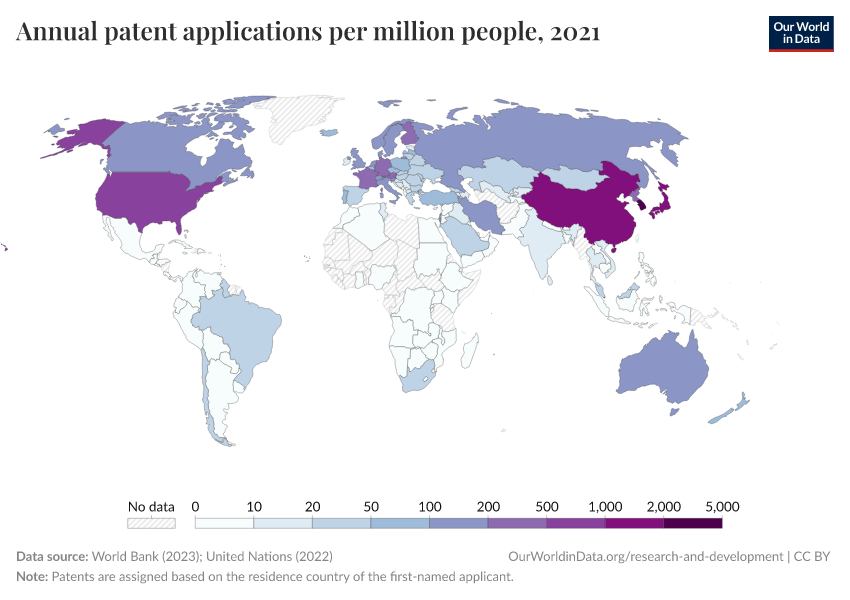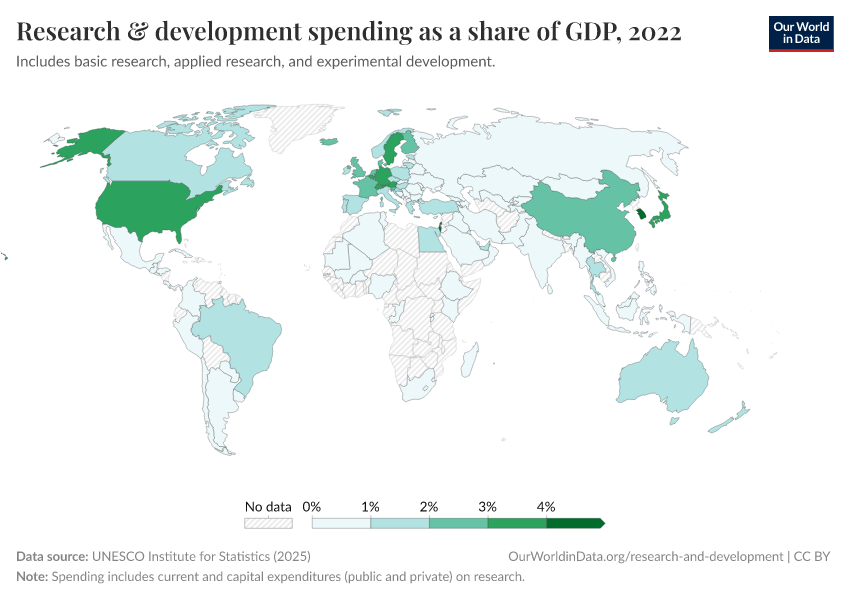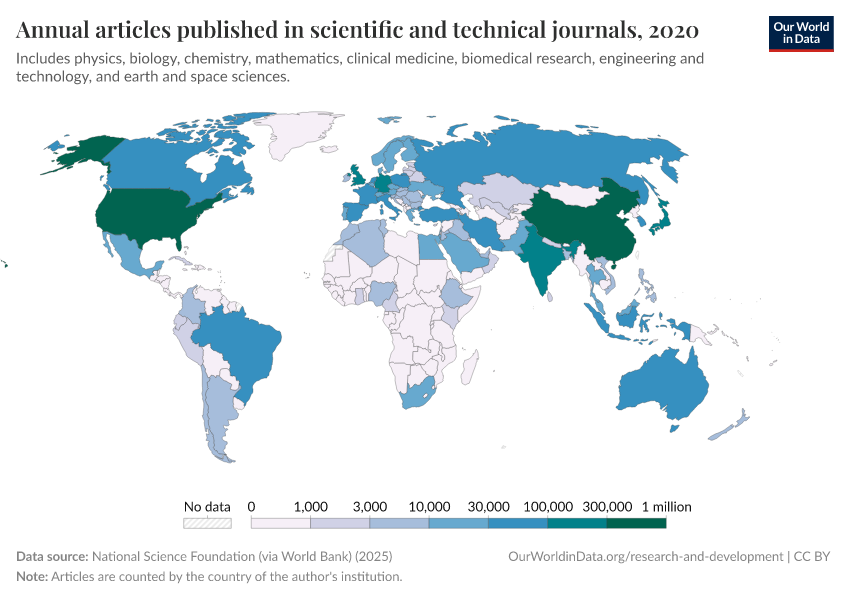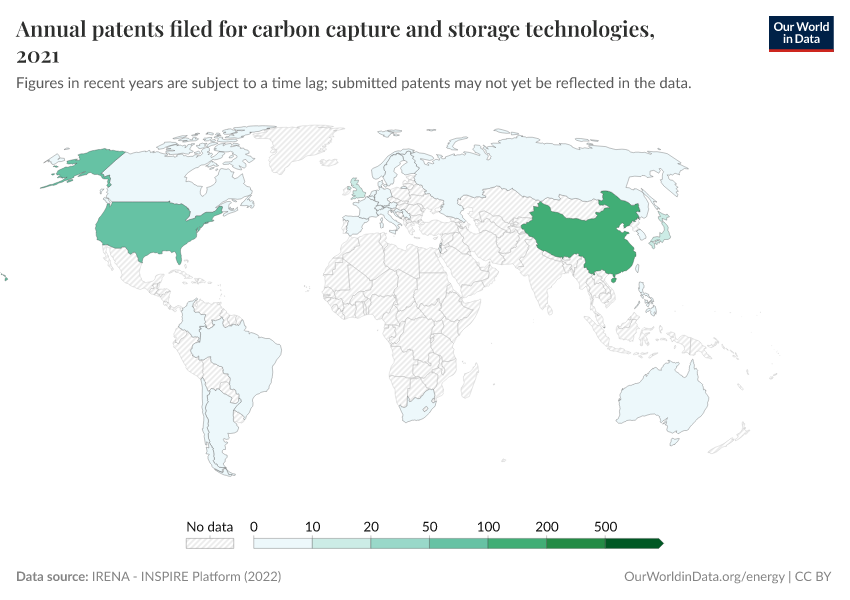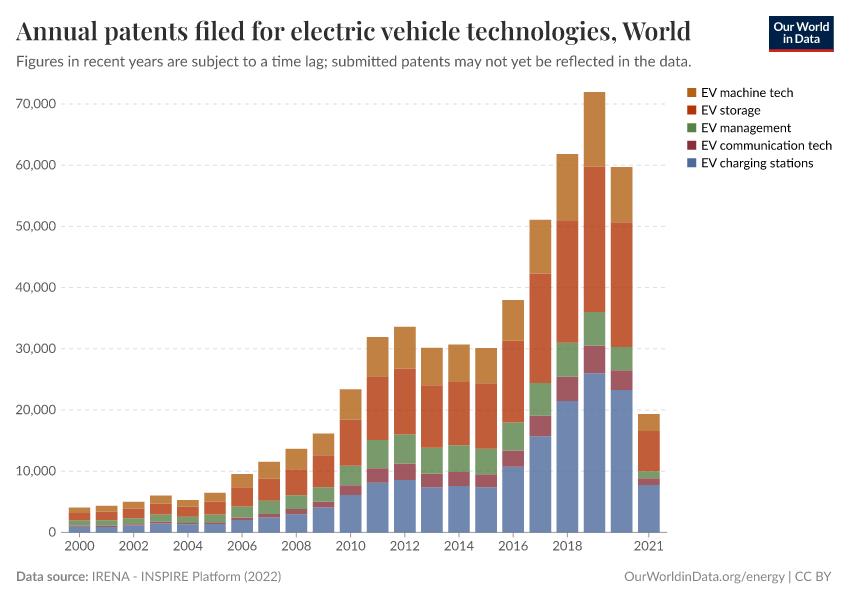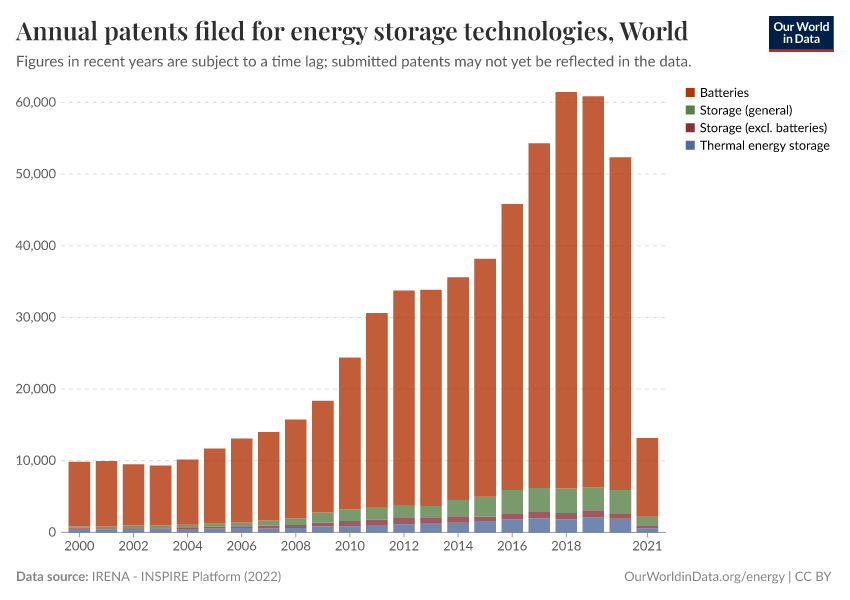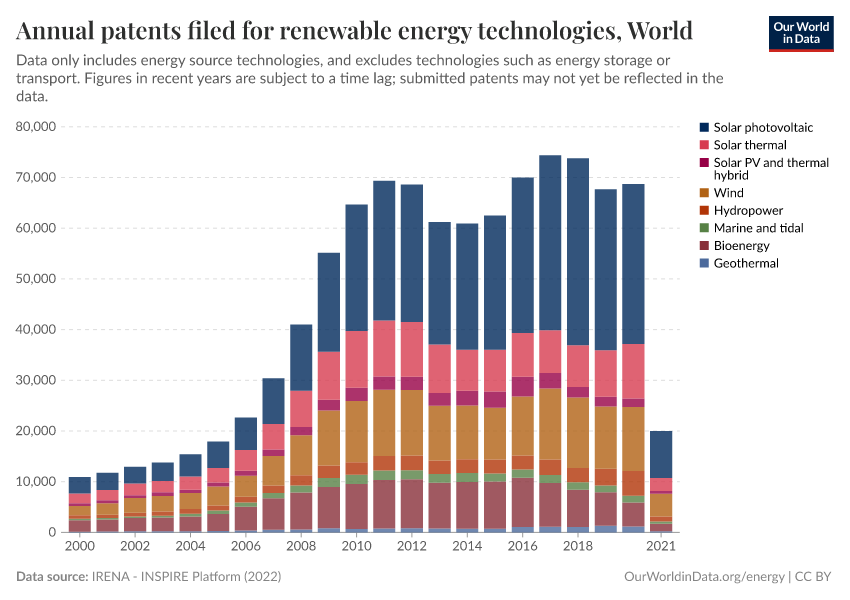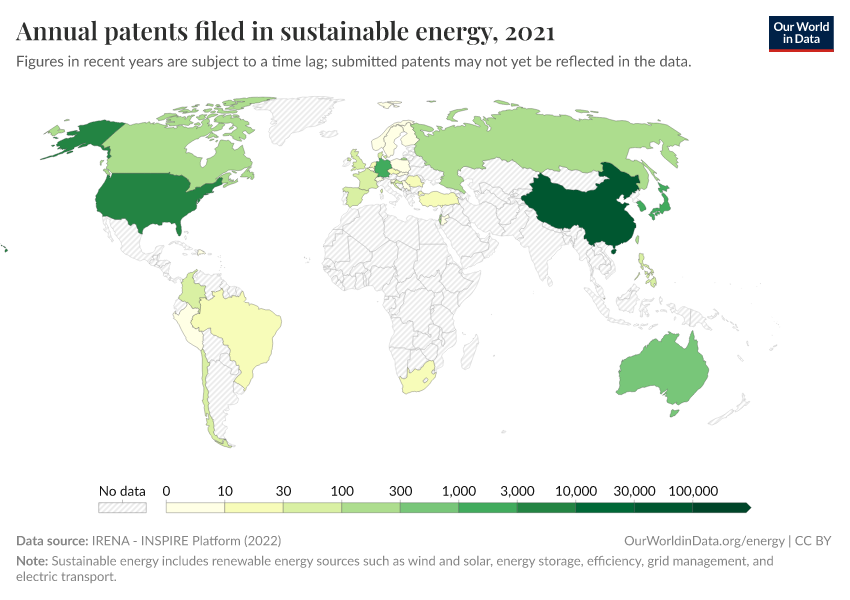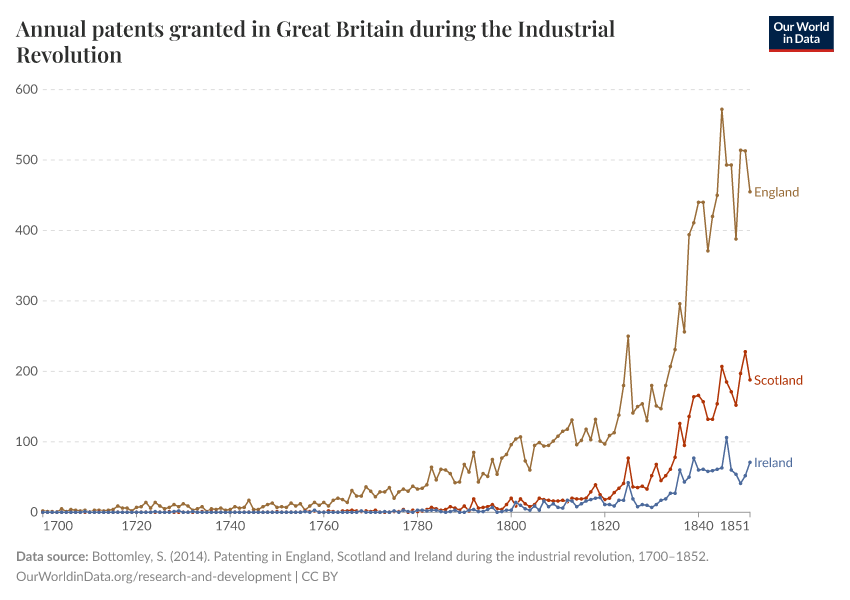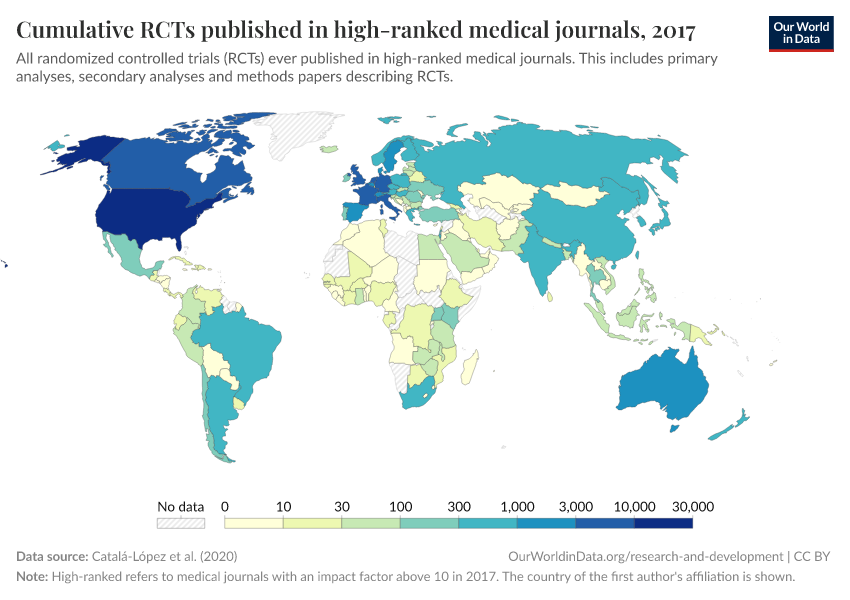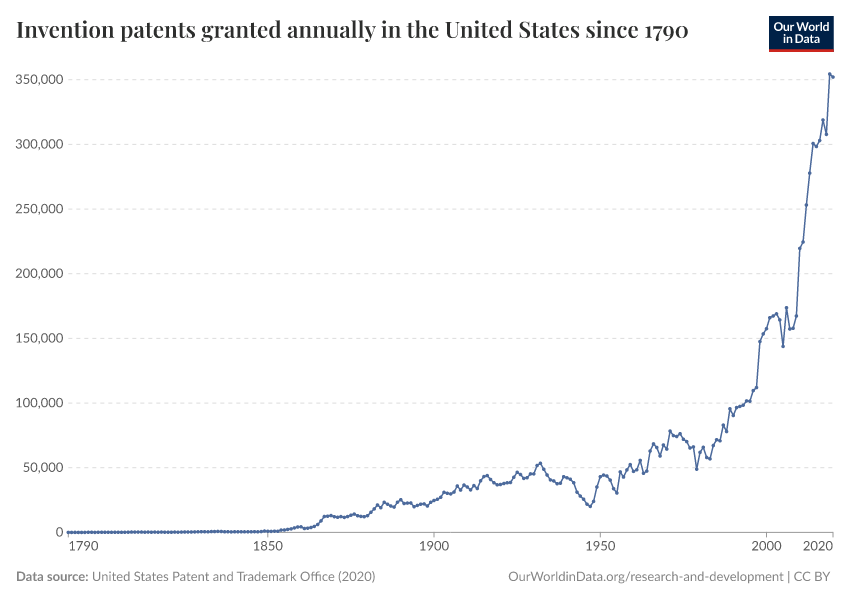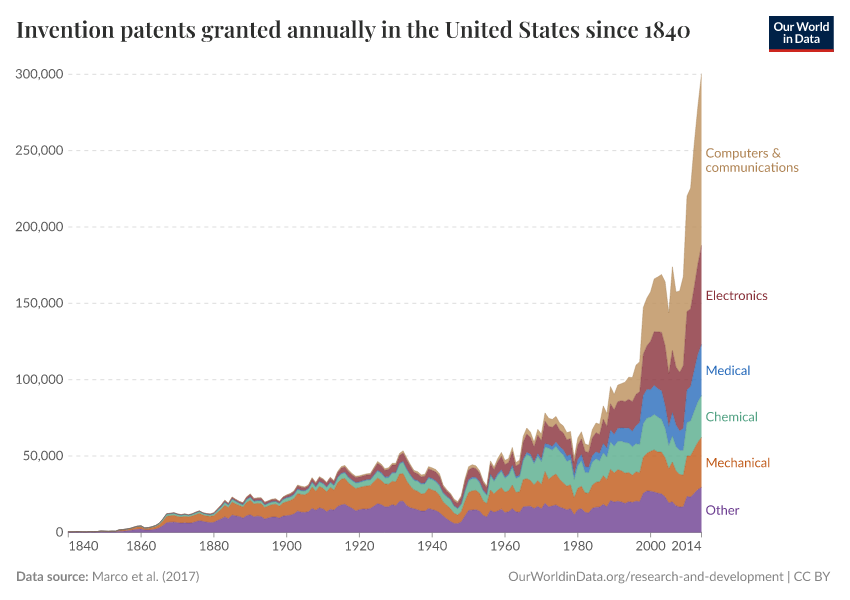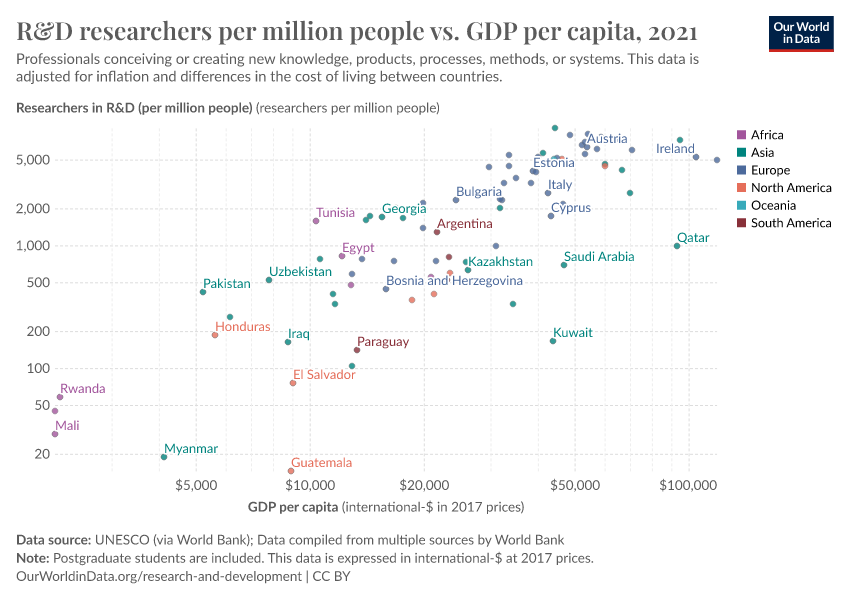Research and Development
Research and development underpin nearly all of the transformative changes the world has seen.
Research and development underpin nearly all the transformative changes we see on Our World in Data.
Cures for diseases, vaccines, and techniques to prevent infection have helped us survive beyond childhood and live much longer lives. Understanding hygiene, water, and sanitation has saved countless lives from preventable diseases.
Electricity, artificial light, transport, and other energy technologies have transformed our lives. Agricultural research has broken deadlocks in crop yields and allowed us to produce enough food for eight billion people.
Even beyond the long list of technological advances, research into effective political and economic systems, human rights, and social sciences have reshaped societies worldwide.
More research is needed to address our largest problems — old and new. We will need innovations in clean energy to tackle climate change, agriculture to feed a growing population, and developments in medical research to tackle existing and prevent new diseases. Research is vital to address emerging and ongoing risks such as artificial intelligence and nuclear weapons.
This page contains all of our data, visualizations, and writing on research, development, and innovation.
Research & Writing
September 19, 2019
Talent is everywhere, opportunity is not. We are all losing out because of this
The world needs ideas and innovation to make progress. Creative and talented people are everywhere, but the opportunity to develop is limited to only a small number of well-off children. The world loses out as a result.
June 04, 2021
The price of batteries has declined by 97% in the last three decades
To transition towards low-carbon energy systems, we need low-cost energy storage. Battery costs have been falling quickly.
December 01, 2020
Why did renewables become so cheap so fast?
In most places, power from new renewables is now cheaper than new fossil fuels.
December 06, 2022
The brief history of artificial intelligence: the world has changed fast — what might be next?
Little is as important for the world’s future and our own lives as how this history continues.
August 22, 2017
Yields vs. land use: how the Green Revolution enabled us to feed a growing population
Crop yields across the world have increased dramatically over the last half-century. But has this kept up with a growing population?
July 20, 2020
Our history is a battle against the microbes: we lost terribly before science, public health, and vaccines allowed us to protect ourselves
For most of history, we were losing the battle against microbes. Vaccines were one of the breakthroughs that turned it around.
December 01, 2019
Antiretroviral therapy has saved millions of lives from AIDS and could save more
Since the late 1980s, antiretroviral therapy has already saved millions of lives from HIV/AIDS. But millions of people with HIV still aren’t getting this life-saving treatment.
Key Charts on Research & Development
See all charts on this topicCite this work
Our articles and data visualizations rely on work from many different people and organizations. When citing this topic page, please also cite the underlying data sources. This topic page can be cited as:
Hannah Ritchie, Edouard Mathieu, and Max Roser (2023) - “Research and Development” Published online at OurWorldinData.org. Retrieved from: 'https://ourworldindata.org/research-and-development' [Online Resource]BibTeX citation
@article{owid-research-and-development,
author = {Hannah Ritchie and Edouard Mathieu and Max Roser},
title = {Research and Development},
journal = {Our World in Data},
year = {2023},
note = {https://ourworldindata.org/research-and-development}
}Reuse this work freely
All visualizations, data, and code produced by Our World in Data are completely open access under the Creative Commons BY license. You have the permission to use, distribute, and reproduce these in any medium, provided the source and authors are credited.
The data produced by third parties and made available by Our World in Data is subject to the license terms from the original third-party authors. We will always indicate the original source of the data in our documentation, so you should always check the license of any such third-party data before use and redistribution.
All of our charts can be embedded in any site.

